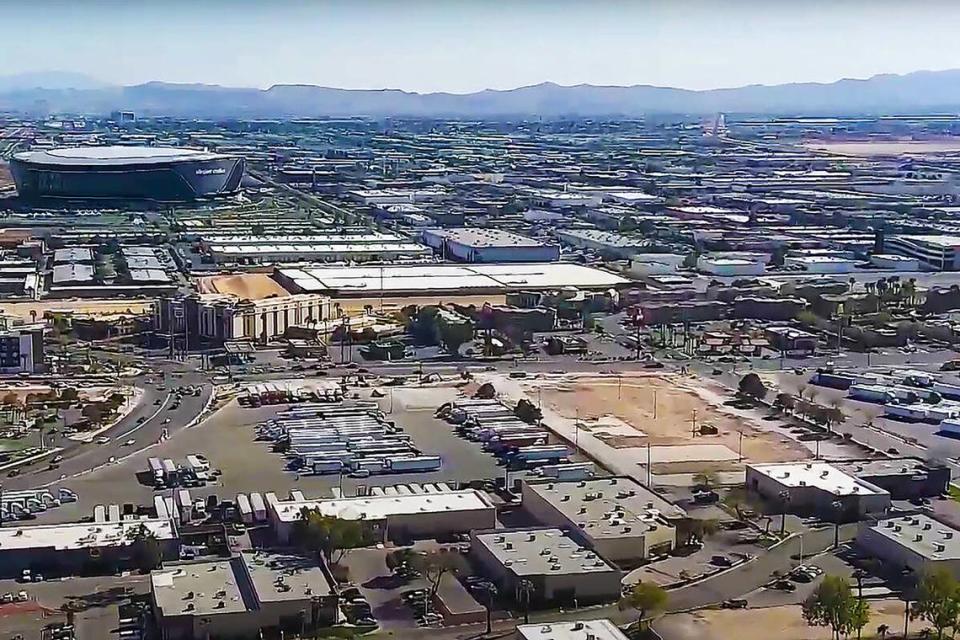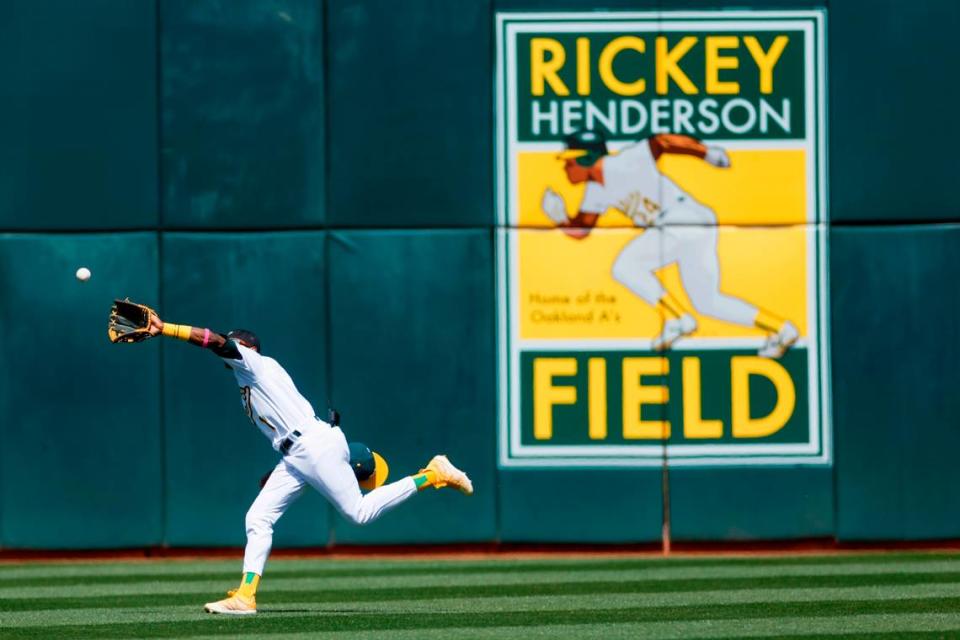Leaving for Las Vegas: The A’s and Oakland make it semi-official. Longest. Breakup. Ever.
The news that the A’s are leaving Oakland, where they’ve been situated for 55 years, will come as a surprise only to those who have been paying virtually no attention for the past two decades or so.
And if you’re one of those people, I understand.
Completely.
Relocation threats are boring. Stories about infrastructure and tax tiers are boring. Council meetings — wow, I don’t have to tell you. So it would be entirely possible for a casual sports fan to check in from time to time over the years without really absorbing the prolonged and seemingly inevitable nature of this break-up: Team ownership threatens Oakland, uh-huh uh-huh … MLB says something something, uh-huh … Blue ribbon commission, uh-huh … Team says Coliseum is crap, roger that …
I mean, owners put cities’ thumbs into the vise all the time. It’s hardly a new tactic, no matter how despicable a civic practice it is. And even within the confines of Oakland, this is a deeply grooved path.
Al Davis wrung concessions left and right out of Alameda County and the city, including the fateful and ultimately hideous decision to stack a second deck onto the Coliseum to make it football-fat, which obliterated the open outfield view to the Oakland hills and left the building looking dark, dank and mostly empty. Davis left, came back, went to court a thousand times, died, and still somehow yanked the team to Las Vegas. (Technically it was his son, Mark, who did that last bit.)
Opinion
Vegas is set to be the home of the A’s as well, assuming nobody screws anything up between now and 2027 or so — about which, place no bets. The news late Wednesday night (it was deep into Thursday morning for you in the CT and ET zones) featured some standard break-up language, including this gem from A’s President Dave Kaval:
“For a while we were on parallel paths (with Oakland), but we have turned our attention to Las Vegas to get a deal here for the A’s and find a long-term home. Oakland has been a great home for us for over 50 years, but we really need this 20-year saga completed and we feel there’s a path here in Southern Nevada to do that.”
That beauty. He throws out “20-year saga” as though it were something that happened to the A’s, not happened because of the A’s. I’ve lived in Northern California for a long time and covered the Oakland franchise for decades, and it is fair to say that the Fisher family (of Gap clothing wealth) is the worst thing to happen to the A’s in their West Coast tenure — and that includes being owned by Charlie Finley.
By the way, the Fishers took over in 2005.
Twenty-year saga, indeed.
But look, this isn’t really a West Coast exclusive. This is a story about sports and impermanence, and the futility of wanting things to stay the same.
Let me put this another way: If you’ve rooted for a team most of your life, and that team today is in the same place it always was, and the same heroes whom you loved growing up are still part of the organization in some form or another, and the fan base is strong, and revenues are good, and ownership wants to compete and is actively trying to win — if all that is true, then you are a 1-percenter as a sports fan, period. Bathe in the luxury of your good fortune.
Most fans get their hearts broken. It could be traumatic, like their team leaving town or folding. It could be more consistently wounding, like having an owner who year in and year out doesn’t give a damn. It could be sad, like seeing a great player lost far too soon or perhaps chased out of the sport by some uncontrollable demon. But heartbreak is one of the connective tissues of our shared sports experience.

When the A’s settle in Las Vegas, just west of the Strip, about a mile north of the stadium where the Raiders have found both home and financial enhancement, the event will mark the fourth iteration of the Athletics franchise. We don’t reference that very often, because it’s old — really old. But they were in Philadelphia, then Kansas City, then Oakland, and it took almost three-quarters of a century for all that to happen. Only then did the franchise commence a long, colorful, often unhappy, usually contentious stretch at the Coliseum.
Now this.
We like to think of teams as part of their communities, and they are, so long as the teams’ owners are getting their way. The cold reality of high-level professional sports is that love is a one-way street. Oakland met that truth a long time ago, and the rest has just been checking days off the calendar, no matter what fantasy or imagery this edition of civic leaders or team execs pretend to.
In the moment, the mayor of Oakland — the most recent mayor of Oakland — declared that the A’s have been using the city in order to extract a better deal in Nevada. Well, yeah. That’s how this stuff works.

It is also inconvenient to recall the years in which Oakland and Alameda County officials, quite variously, might have worked on some more promising plan than the last-ditch, very complex and years-long effort to make something materialize at Howard Terminal in the city’s critically important port district.
But that’s tugging on thin strands. Plenty of city and county folks through the years tried and tried for a Plan B, C, X or Z when it came to the baseball team. The unchanging big-picture issue is that the A’s, owned by the awful Fishers, have never evinced any interest in doing anything that they’d have to pay very much to do. Even now, the financing of the $1.5 billion Vegas ballpark itself is murky and unsettled; all we know for sure is that the A’s are buying the land where it’s to be built. (That would be 49 acres at Dean Martin Drive and Tropicana Avenue, for those keeping score.)
There’s a side issue here, though it played a huge role down through the the years. The San Francisco Giants long ago were ceded the San Jose market — ceded it by the A’s, incredibly enough, back when the Giants were the team on the verge of leaving and were struggling to find a place for a new ballpark. That franchise failed to win free civic money in the form of multiple public votes, at multiple locations, before finally building Oracle Park itself behind an ownership group fronted by the late Peter Magowan, who did, in fact, give a damn.
The A’s were never going to do something like that. MLB commissioner Rob Manfred lifted zero fingers to re-set the San Jose market, which meant a lot of Silicon Valley money stayed out of the Fishers’ pockets, and the family never came close to doing its own work the way the Giants once did. That is how a two-team market became so ripe to become a one-team market.
It may not be forever, but trying to figure out a longer-term future in sports is a fool’s errand. In a shocking decade, the East Bay has seen the Warriors cross over to S.F., the Raiders bail out entirely and the A’s make plans — over and over, it seemed — to get the hell out. That is a fair rough patch, right there.
A whole bunch of the doings in this market implosion have existed at the level of negotiation, zoning, financing, committee meetings, public posturing, and general bullspit. It was dry and dull. It also mattered to the nth degree.
Ultimately, though, it’s the sports fans who feel it deep. The A’s fans are feeling it now. There are a ton of them, people who’ve rooted for the franchise forever even as they gradually stopped going to a stadium whose anchor tenant kept telling them how terrible the place was, how unfit it was for baseball, how terminal was the case.
The Fishers did nothing, spent nothing, and collected massive revenue anyway, because the MLB owners who do care — who do make money — were forced to share the wealth. If the Vegas situation fixes that, it’ll be the only thing made better so long as the family continues to own the team. But that’s heartbreak for you.
Mark Kreidler is a national award-winning journalist, author and broadcaster. Find his work at markkreidler.substack.com.

